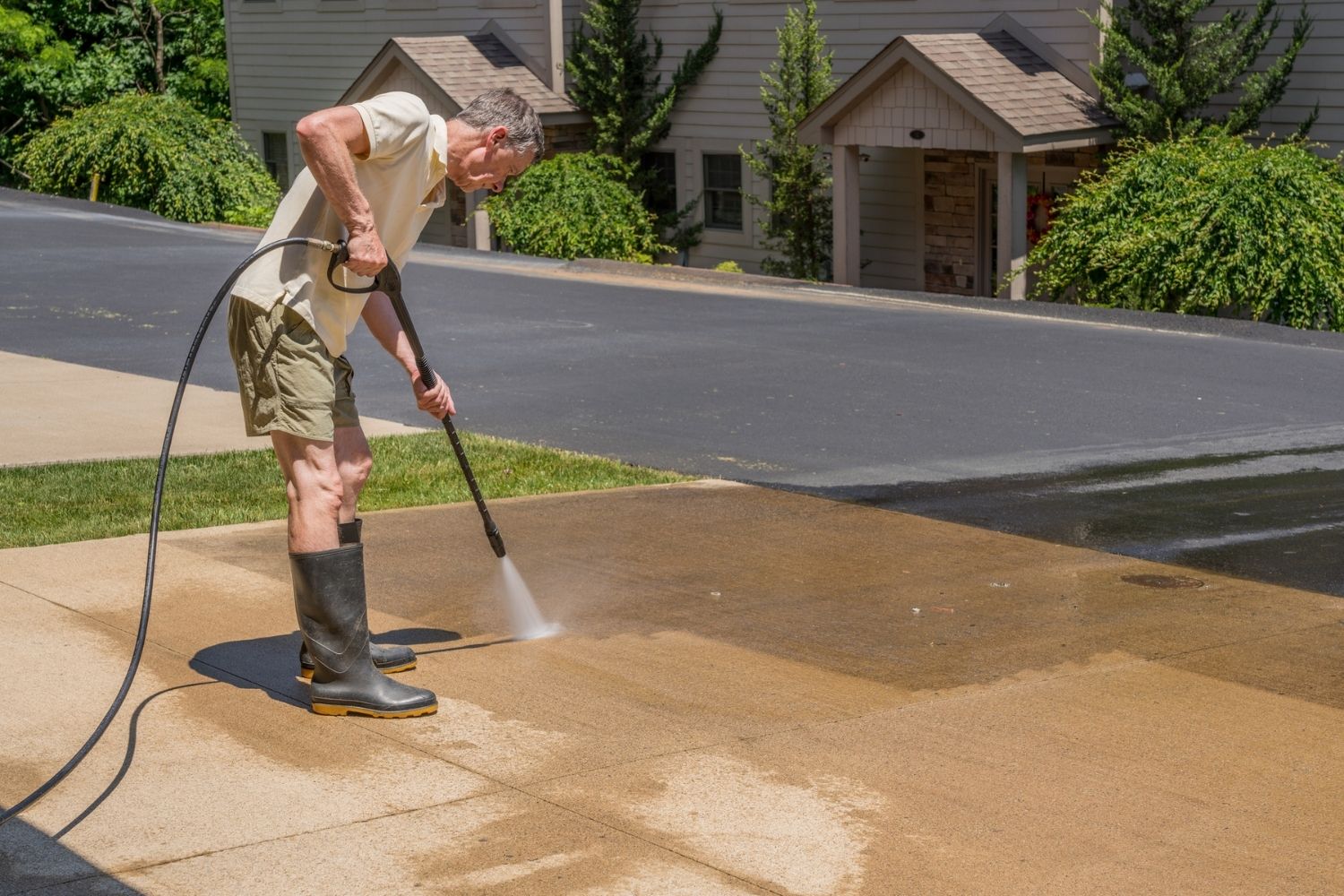

Articles
How To Clean Driveway With Pressure Washer
Modified: October 20, 2024
Learn helpful tips and techniques in our informative articles on how to clean your driveway using a pressure washer. Achieve a spotless and pristine driveway with our expert advice.
(Many of the links in this article redirect to a specific reviewed product. Your purchase of these products through affiliate links helps to generate commission for Storables.com, at no extra cost. Learn more)
Introduction
Having a clean and well-maintained driveway not only enhances the curb appeal of your home but also ensures its longevity and durability. Over time, driveways can accumulate dirt, grime, debris, oil stains, and even mildew, making them look dull and unattractive. In such cases, using a pressure washer is a highly effective and efficient method to restore your driveway’s pristine condition.
A pressure washer is a versatile cleaning tool that uses high-pressure water to remove tough stains, dirt, and grime from various surfaces, including driveways. It provides a deep and thorough clean, leaving your driveway looking as good as new.
However, it’s important to approach driveway cleaning with a clear understanding of the proper techniques and safety precautions involved. This article will guide you through the process of cleaning your driveway with a pressure washer, ensuring that you achieve optimal results while maintaining your safety.
Before we delve into the step-by-step guide, let’s explore the benefits of using a pressure washer for driveway cleaning.
Key Takeaways:
- Pressure washers are efficient, versatile, and environmentally friendly tools for driveway cleaning, providing a deep and thorough clean while minimizing the use of harsh chemicals and detergents.
- Prioritizing safety, proper equipment, and preventive maintenance are essential for achieving optimal results and maintaining a clean, well-maintained driveway that enhances the overall curb appeal of your home.
Why Use a Pressure Washer to Clean Your Driveway
Cleaning your driveway can be a daunting task, especially when faced with stubborn stains and built-up grime. This is where a pressure washer proves invaluable. Here are some reasons why using a pressure washer is the ideal choice for cleaning your driveway:
- Efficiency: Pressure washers deliver a powerful stream of water at high pressures, allowing you to remove embedded dirt, mold, and stains quickly and effortlessly. The force of the water effectively loosens and rinses away debris, leaving your driveway looking clean and revitalized.
- Versatility: Pressure washers are versatile machines that can be used on a variety of surfaces, ranging from concrete and asphalt to pavers and tiles. This means you can use the same pressure washer to clean not only your driveway but also your patio, sidewalks, and other outdoor surfaces.
- Time-saving: Compared to manual cleaning methods, a pressure washer significantly reduces cleaning time. The high-pressure water stream covers a larger surface area, allowing you to finish the task in a fraction of the time it would take with traditional methods.
- Environmentally friendly: Pressure washers use water as their main cleaning agent, eliminating the need for harsh chemicals or detergents. This makes them an eco-friendly option for cleaning your driveway, as they minimize the release of harmful substances into the environment.
- Cleaning power: The high-pressure water stream produced by a pressure washer can tackle even the toughest stains, including oil, grease, and tire marks. It lifts and removes the most stubborn residues, restoring the appearance of your driveway and enhancing its overall cleanliness.
By utilizing a pressure washer, you can transform the appearance of your driveway and improve the overall curb appeal of your home. Now that you understand the benefits, let’s move on to the essential safety precautions you should take before using a pressure washer on your driveway.
Safety Precautions
While pressure washers are powerful tools that can efficiently clean your driveway, it’s crucial to prioritize safety when using them. Follow these safety precautions to ensure a safe and accident-free cleaning process:
- Protective Gear: Wear appropriate protective gear, including safety goggles, gloves, and non-slip footwear, to shield yourself from debris, water splashes, and chemical splatters. Long pants and a long-sleeved shirt are also recommended to prevent any skin contact with the cleaning solution.
- Choose the Right Pressure: Adjust the pressure settings on your pressure washer according to the type of surface you are cleaning. High pressure can damage delicate surfaces like wood or cause etching on softer materials, whereas low pressure may not effectively remove tough stains. Consult the manufacturer’s guidelines or seek professional advice for the correct pressure settings.
- Maintain a Safe Distance: Keep a safe distance between yourself and the pressure washer nozzle while in use. This will prevent any accidental injury from the high-pressure water stream. Start with a greater distance and gradually move closer, as needed, while maintaining a safe working distance.
- Beware of Electrical Hazards: If you’re using an electric pressure washer, be cautious of the electrical connections and cords. Keep them away from the water and make sure they are adequately grounded. Avoid using extensions cords that are not specifically designed for outdoor or wet conditions to minimize the risk of electric shock.
- Use Proper Technique: Hold the pressure washer firmly with both hands and maintain a stable stance to ensure proper control and balance. Avoid pointing the nozzle towards yourself, others, or any fragile items. Start at a lower pressure and gradually increase as needed, testing on a small inconspicuous area before proceeding to clean the entire driveway.
- Mind Your Surroundings: Take note of any nearby objects or people that may be affected by the high-pressure water stream. Move any vehicles, garden furniture, or other items away from the cleaning area to prevent damage. Alert family members or neighbors to ensure their safety and keep pets indoors during the cleaning process.
- Use Chemicals Responsibly: If you choose to use a cleaning solution or detergent with your pressure washer, read and follow the manufacturer’s instructions carefully. Use environmentally friendly and biodegradable products whenever possible. Avoid using bleach or other harsh chemicals that may harm plants, grass, or nearby surfaces.
By adhering to these safety precautions, you can minimize the risks associated with pressure washing and ensure a safe and successful driveway cleaning experience. Now that you’re aware of the essential safety measures, let’s move on to the equipment and materials you’ll need for the task.
Equipment and Materials Needed
Before you start cleaning your driveway with a pressure washer, make sure you have the following equipment and materials:
- Pressure Washer: Choose a pressure washer with suitable pressure settings for driveway cleaning. Opt for a gas-powered or electric pressure washer depending on your preference and availability of power sources. Gas-powered pressure washers generally offer higher pressures, making them more suitable for larger driveways and tougher stains.
- Nozzles and Attachments: Most pressure washers come with a range of nozzles and attachments that allow you to adjust the width and intensity of the water stream. Use a wide-angle or flat nozzle for general cleaning and a narrow angle nozzle for more concentrated pressure on stubborn stains.
- Extension Wand or Lance: An extension wand or lance is a long, hollow tube that attaches to the pressure washer. It allows you to reach higher or farther areas without straining yourself. Choose an extension wand with the appropriate length for your driveway dimensions.
- Surface Cleaner Attachment (optional): A surface cleaner attachment is a useful accessory that can expedite the cleaning process, especially for large driveways. It consists of a circular cleaning head with rotating nozzles, providing even pressure and coverage for faster and more efficient cleaning.
- Protective Gear: As mentioned earlier, wear safety goggles, gloves, non-slip footwear, long pants, and a long-sleeved shirt to protect yourself from any potential hazards.
- Driveway Cleaning Solution: Depending on the level of dirt and stains on your driveway, you may choose to use a cleaning solution or detergent. Ensure that it is compatible with pressure washers and safe for the environment. Alternatively, you can make a homemade cleaning solution using mild soap or dish detergent.
- Water Source: Ensure you have access to a water source, such as a garden hose, with ample water supply for the duration of the cleaning process.
- Broom or Brush: Use a broom or brush to sweep and remove loose debris, leaves, or dirt from the surface of your driveway before using the pressure washer.
- Protective Coverings: If you have delicate plants, outdoor furniture, or other items near the driveway, consider covering them with plastic tarps or sheets to protect them from water splashes or cleaning chemicals.
- Safety Signs (optional): If your driveway is near a public area or if you want to caution others, it may be a good idea to place safety signs or cones to alert people of the cleaning activity.
Having the necessary equipment and materials ready will ensure a smooth and efficient cleaning process. With everything set, let’s move on to the step-by-step guide on how to clean your driveway with a pressure washer.
Step-by-Step Guide to Cleaning Your Driveway with a Pressure Washer
Now that you have gathered the required equipment and materials, follow these step-by-step instructions to effectively clean your driveway using a pressure washer:
1. Prepare the area: Remove any debris or loose dirt from your driveway by sweeping it with a broom or brush. Clear the driveway of any obstacles or items that could get in the way during the cleaning process.
2. Pre-soak: If your driveway has stubborn stains or areas with heavy grime buildup, consider pre-soaking these areas with a driveway cleaning solution. Apply the solution according to the manufacturer’s instructions and let it sit for a few minutes to loosen the stains.
3. Connect the pressure washer: Attach the appropriate nozzle to the pressure washer wand or lance. Refer to the manufacturer’s instructions to ensure the nozzle is securely connected. Connect the pressure washer to a water source and turn on the water supply.
4. Adjust the pressure: Set the pressure washer to the appropriate pressure level for your driveway surface. Test the pressure on a small, inconspicuous area to ensure it does not cause any damage. Adjust the pressure accordingly until you achieve the desired cleaning effect.
5. Start cleaning: Stand a few feet away from your driveway and hold the pressure washer wand at an angle of approximately 45 degrees to the surface. Begin spraying the water across the driveway, making sweeping motions from one side to the other. Work in small sections, gradually moving forward until you have covered the entire driveway.
6. Pay attention to stubborn stains: For stubborn stains or heavily soiled areas, concentrate the water stream on those spots. Use a narrower nozzle setting and get closer to the surface. Move the wand in a back-and-forth or circular motion to agitate and lift the stains.
7. Use a surface cleaner attachment: If you have a surface cleaner attachment, it can make the cleaning process faster and more efficient. Attach the surface cleaner to the pressure washer and move it slowly across the driveway, overlapping each pass for even coverage.
8. Rinse the driveway: After you have thoroughly cleaned the entire driveway, switch to a wider nozzle setting and rinse off any remaining dirt and cleaning solution. Start from one end and work your way to the other end, ensuring that all cleaning residues are washed away.
9. Dry the surface: Allow your driveway to air dry naturally. Depending on the weather conditions, this may take a few hours to a full day. Avoid walking or driving on the wet surface to prevent slipping or leaving tire marks.
10. Inspect and touch up: Once the driveway is dry, inspect the surface for any missed spots or stubborn stains that may require further attention. Repeat the cleaning process or use spot treatment methods to remove any remaining stains.
By following these steps, you can effectively clean your driveway using a pressure washer and achieve remarkable results. Next, let’s explore some helpful tips for a more efficient and effective driveway cleaning experience.
Before using a pressure washer on your driveway, make sure to sweep away any debris and apply a degreaser to any oil stains. Use a wide nozzle and keep the wand moving to avoid damaging the surface.
Read more: How To Clean Decking With A Pressure Washer
Tips for Effective Cleaning
When cleaning your driveway with a pressure washer, keep these tips in mind to ensure a more efficient and effective cleaning experience:
- Start with a test spot: Before cleaning the entire driveway, it’s always a good idea to test the pressure washer on a small, inconspicuous area. This allows you to determine the optimal pressure and distance for your specific driveway surface.
- Work in sections: Divide your driveway into manageable sections and clean them one at a time. This prevents the cleaning solution or water from drying on the surface before you have a chance to rinse it off, ensuring a more thorough clean.
- Maintain a consistent distance: Keep a consistent distance between the pressure washer nozzle and the driveway surface to achieve even cleaning. Varying the distance can result in uneven cleaning or even damage to the surface.
- Use overlapping strokes: Overlapping your cleaning strokes ensures that every part of the driveway receives equal attention. This helps eliminate streaks and ensures a more uniform appearance.
- Work from top to bottom: Start cleaning from the highest point of your driveway and work your way down to the lowest point. This allows the dirt and debris to flow downwards, preventing them from settling on already cleaned areas.
- Remove oil stains separately: Oil stains require special treatment and may not be completely removed with just a pressure washer. Pre-treat oil stains using a specialized oil stain remover or a mixture of baking soda and hot water. Scrub the stains with a brush, then rinse them away before proceeding with the general cleaning process.
- Protect adjacent surfaces: If your driveway is bordered by delicate surfaces, such as flower beds or painted walls, cover them with plastic sheeting or use a protective barrier to prevent accidental damage from the high-pressure water stream or cleaning solution.
- Stay hydrated and take breaks: Pressure washing can be physically demanding, so remember to stay hydrated and take breaks as needed. This will help maintain your energy levels and prevent fatigue or muscle strain.
- Follow the manufacturer’s instructions: Always refer to the manufacturer’s instructions for your pressure washer and any cleaning solutions or detergents you use. Following their guidelines will ensure optimal performance and prevent any damage to the equipment or driveway surface.
- Maintain a regular cleaning schedule: To keep your driveway looking its best, incorporate periodic pressure washing into your routine maintenance. Regular cleaning can help prevent the buildup of dirt, grime, and stains, prolonging the lifespan and appearance of your driveway.
By implementing these tips, you can achieve more effective and efficient results when cleaning your driveway with a pressure washer. Next, let’s explore how to tackle stubborn stains that may require additional attention.
Removing Stubborn Stains
While a pressure washer is powerful in removing dirt and grime from your driveway, some stubborn stains may require some extra effort and targeted treatment. Here are some methods you can try to tackle stubborn stains:
- Oil and Grease Stains: For oil and grease stains, start by applying an absorbent material like cat litter, baking soda, or sawdust to soak up any excess oil. Let it sit for a few hours or overnight, then sweep it away. Next, use a degreaser specifically designed for concrete or a mixture of dish detergent and hot water. Scrub the stain with a brush, then rinse it away with a pressure washer.
- Rust Stains: Rust stains can be challenging to remove. Use a commercial rust stain remover according to the manufacturer’s instructions. Apply the solution to the stain, let it sit for the recommended time, and then scrub the area with a brush. Rinse thoroughly with a pressure washer.
- Mold and Mildew: To combat mold and mildew, use a mixture of bleach and water (1 part bleach to 10 parts water). Apply the solution to the affected areas and allow it to sit for a few minutes. Scrub the surface with a brush to remove the mold and mildew, then rinse thoroughly with a pressure washer.
- Tire Marks: Tire marks can often be difficult to remove. In most cases, they will fade over time with regular cleaning. However, if they persist, use a commercial tire mark remover or a mixture of baking soda and hot water. Scrub the tire marks with a brush and rinse with a pressure washer.
- Paint or Graffiti: Removing paint or graffiti requires specialized methods. If you have paint stains on your driveway, consult a professional or use a graffiti remover specifically designed for the type of paint used. Follow the instructions carefully and consider seeking professional help if the stains are extensive or difficult to remove.
Remember to always test any cleaning solutions or methods in a small, inconspicuous area before applying them to the entire stain. This will ensure that they do not cause any damage or discoloration to your driveway surface.
If all your attempts to remove stubborn stains are unsuccessful, consider seeking professional assistance to restore the appearance of your driveway. They have the expertise and specialized equipment to tackle even the most stubborn stains.
Once you have successfully addressed the stubborn stains, it’s time to give your driveway a final rinse and add the finishing touches.
Rinse and Finishing Touches
After cleaning your driveway and treating any stubborn stains, it’s important to thoroughly rinse the surface to remove any remaining debris or cleaning solution. Here are the steps to follow for the final rinse and some finishing touches to complete the cleaning process:
- Rinse from top to bottom: Start at the highest point of your driveway and work your way down to the lowest point. This ensures that any dirt or residue will flow downward and get rinsed away.
- Use a wider nozzle setting: Switch to a wider spray pattern on your pressure washer nozzle to cover larger areas and rinse off any remaining debris. Adjust the pressure accordingly to prevent damage to the surface.
- Maintain a consistent distance: Keep a consistent distance between the pressure washer nozzle and the driveway surface to ensure even rinsing. This will help avoid streaks or areas that are left unwashed.
- Overlap your rinsing strokes: Just like during the cleaning process, make overlapping strokes with the pressure washer wand to ensure all areas are adequately rinsed.
- Inspect for any missed spots: After rinsing the entire driveway, visually inspect the surface for any missed spots or areas that may still require further attention. Use a brush or smaller nozzle setting to target these areas if necessary.
- Remove excess water: If there is excess water pooling on your driveway, use a squeegee or a push broom to remove it. This will help speed up the drying process and prevent the water from seeping into cracks or causing slip hazards.
- Allow time for drying: Let your driveway air dry completely before allowing any foot or vehicle traffic. Depending on weather conditions, this may take a few hours to a full day. Avoid driving or walking on the wet surface to prevent any imprints or slip accidents.
- Inspect and touch up if needed: Once the driveway is dry, take a final look to ensure that all stains and dirt have been successfully removed. If there are any remaining blemishes or areas that require further attention, you can spot treat or consider seeking professional assistance.
- Consider applying a sealant: To protect your freshly cleaned driveway and prolong its appearance, consider applying a concrete or asphalt sealant. This will create a barrier against future dirt, stains, and damage, making future cleaning easier and extending the lifespan of your driveway.
By following these steps and adding the finishing touches, you can ensure that your driveway is thoroughly cleaned, free from debris, and ready to enhance the curb appeal of your home.
Now that you have successfully cleaned your driveway, let’s explore some preventive maintenance tips to help keep it looking its best for the long term.
Preventive Maintenance for Your Driveway
Keeping your driveway clean and well-maintained not only enhances its appearance but also helps extend its lifespan. Here are some preventive maintenance tips to follow:
- Regular cleaning: Incorporate regular cleaning into your maintenance routine. By removing dirt, debris, and stains on a consistent basis, you can prevent buildup and reduce the need for intense cleaning in the future.
- Sweep regularly: Sweep your driveway regularly to remove loose dirt, leaves, and debris. This prevents them from being ground into the surface and potentially causing damage.
- Address spills and stains promptly: If you notice any spills or stains on your driveway, take prompt action to clean them up. Oil, grease, and other substances can penetrate the surface and lead to more stubborn stains if left untreated.
- Apply a sealant: Applying a sealant to your driveway can help protect it from the elements and prevent staining. Choose a sealant appropriate for your driveway material, such as concrete or asphalt, and follow the manufacturer’s instructions for application.
- Repair cracks and damage: Regularly inspect your driveway for any cracks, potholes, or other damage. Small cracks can quickly become larger if neglected, so take the necessary steps to repair and patch them to prevent further deterioration.
- Use caution with snow removal: When removing snow or ice from your driveway, use a shovel or snow blower with rubber or plastic blades to avoid damaging the surface. Avoid using metal tools that can scratch or chip the concrete or asphalt.
- Prevent weed growth: Keep an eye out for any weeds or grass that may grow through cracks or joints in the driveway. Remove them promptly to prevent further growth and potential damage to the surface.
- Be mindful of heavy vehicles: If you often have heavy vehicles, such as trucks or RVs, parked on your driveway, consider placing protective mats or boards under the tires to distribute the weight and prevent indentations or damage to the surface.
- Avoid harsh chemicals: When cleaning your driveway or removing stains, opt for environmentally friendly and biodegradable cleaning solutions. Harsh chemicals can damage the surface and harm nearby vegetation.
- Consult professionals: If you are unsure about the best maintenance practices for your driveway or if you encounter significant damage or staining, consult professionals for advice and assistance. They can provide expert guidance and recommend appropriate solutions.
By incorporating these preventive maintenance tips into your routine, you can help keep your driveway in excellent condition, prolong its lifespan, and minimize the need for extensive repairs or cleaning in the future.
To conclude, cleaning your driveway with a pressure washer is an effective and efficient method to restore its appearance and ensure its longevity. By following the step-by-step guide, taking necessary safety precautions, and implementing preventive maintenance practices, you can enjoy a clean, well-maintained driveway that enhances the overall appeal of your home.
Read more: How To Clean Siding With Pressure Washer
Conclusion
Cleaning your driveway with a pressure washer is a highly effective and efficient method to restore its pristine condition and enhance the curb appeal of your home. By following the step-by-step guide, taking necessary safety precautions, and implementing preventive maintenance practices, you can achieve remarkable results and enjoy a clean and well-maintained driveway for years to come.
Using a pressure washer provides numerous benefits, including efficiency, versatility, time-saving, and eco-friendliness. With its powerful stream of high-pressure water, a pressure washer can effectively remove tough stains, dirt, grime, and even mold or mildew from various types of driveway surfaces. It is a versatile tool that can also be used on other outdoor surfaces, such as patios and sidewalks.
However, safety should always be a top priority when using a pressure washer. Make sure to wear appropriate protective gear, adjust the pressure settings correctly, and maintain a safe distance from the nozzle. Additionally, be mindful of electrical hazards, use proper technique, and be aware of your surroundings to prevent accidents and injuries.
Before starting the cleaning process, gather the necessary equipment and materials, such as a pressure washer, nozzles and attachments, protective gear, cleaning solutions, and a reliable water source. Preparing the area, pre-soaking stubborn stains, and connecting the pressure washer properly are essential steps to ensure a smooth cleaning process.
Follow the step-by-step guide to clean your driveway effectively, working in sections, maintaining a consistent distance, and overlapping your cleaning strokes. Pay special attention to stubborn stains and use targeted treatment methods to remove oil, grease, rust, or tire marks. After the cleaning is complete, rinse the driveway thoroughly and remove excess water.
To maintain the pristine condition of your driveway, consider implementing preventive maintenance practices, such as regular cleaning, sweeping, addressing spills promptly, and applying a sealant. It is also important to repair any cracks or damage, use caution during snow removal, prevent weed growth, and be mindful of heavy vehicles.
In conclusion, cleaning your driveway with a pressure washer is a rewarding task that can significantly enhance the appearance and durability of your driveway. By following the provided guide, taking safety precautions, and practicing preventive maintenance, you can enjoy a clean and well-maintained driveway that adds value to your home and creates a welcoming first impression.
Frequently Asked Questions about How To Clean Driveway With Pressure Washer
Was this page helpful?
At Storables.com, we guarantee accurate and reliable information. Our content, validated by Expert Board Contributors, is crafted following stringent Editorial Policies. We're committed to providing you with well-researched, expert-backed insights for all your informational needs.
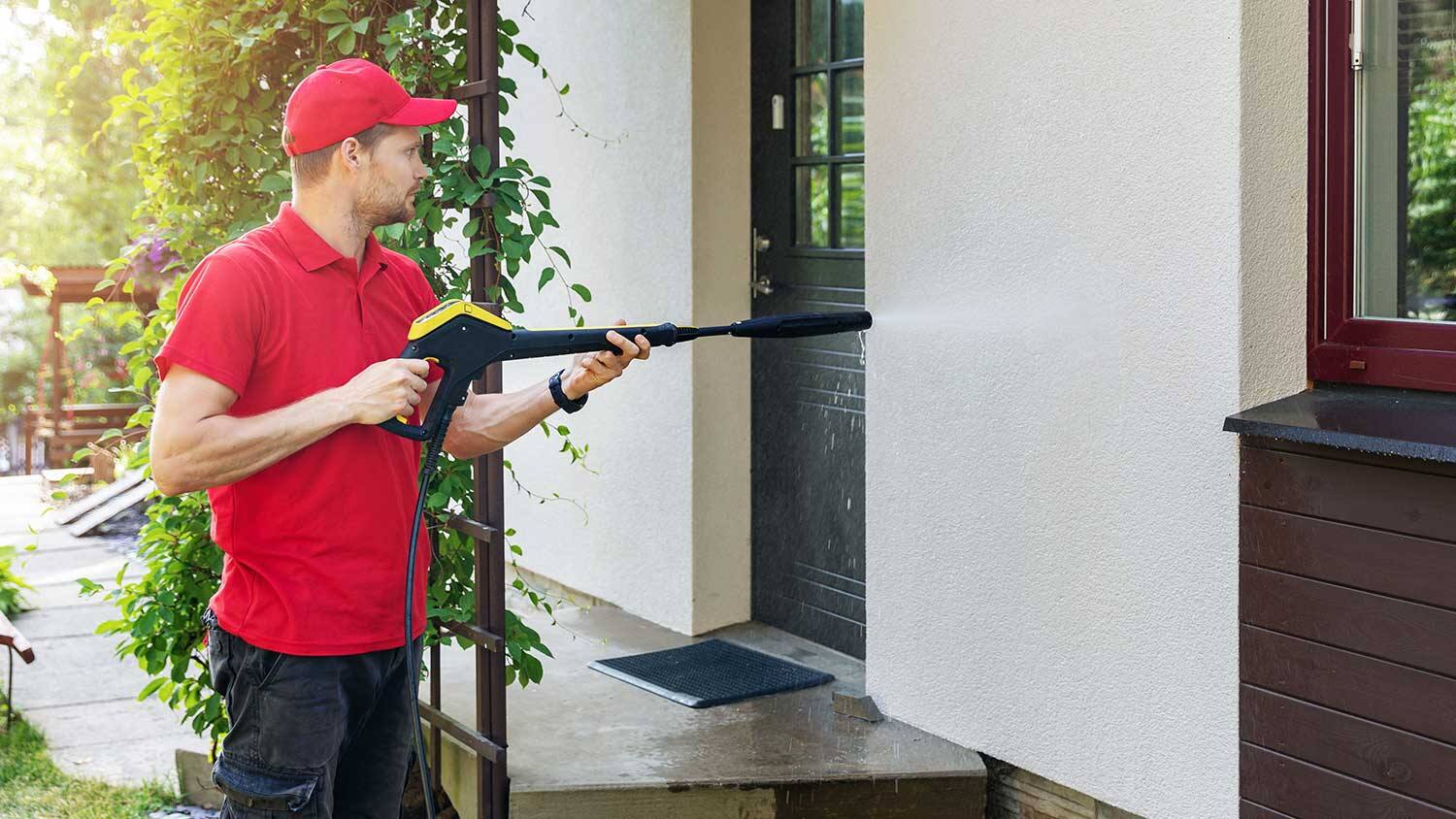
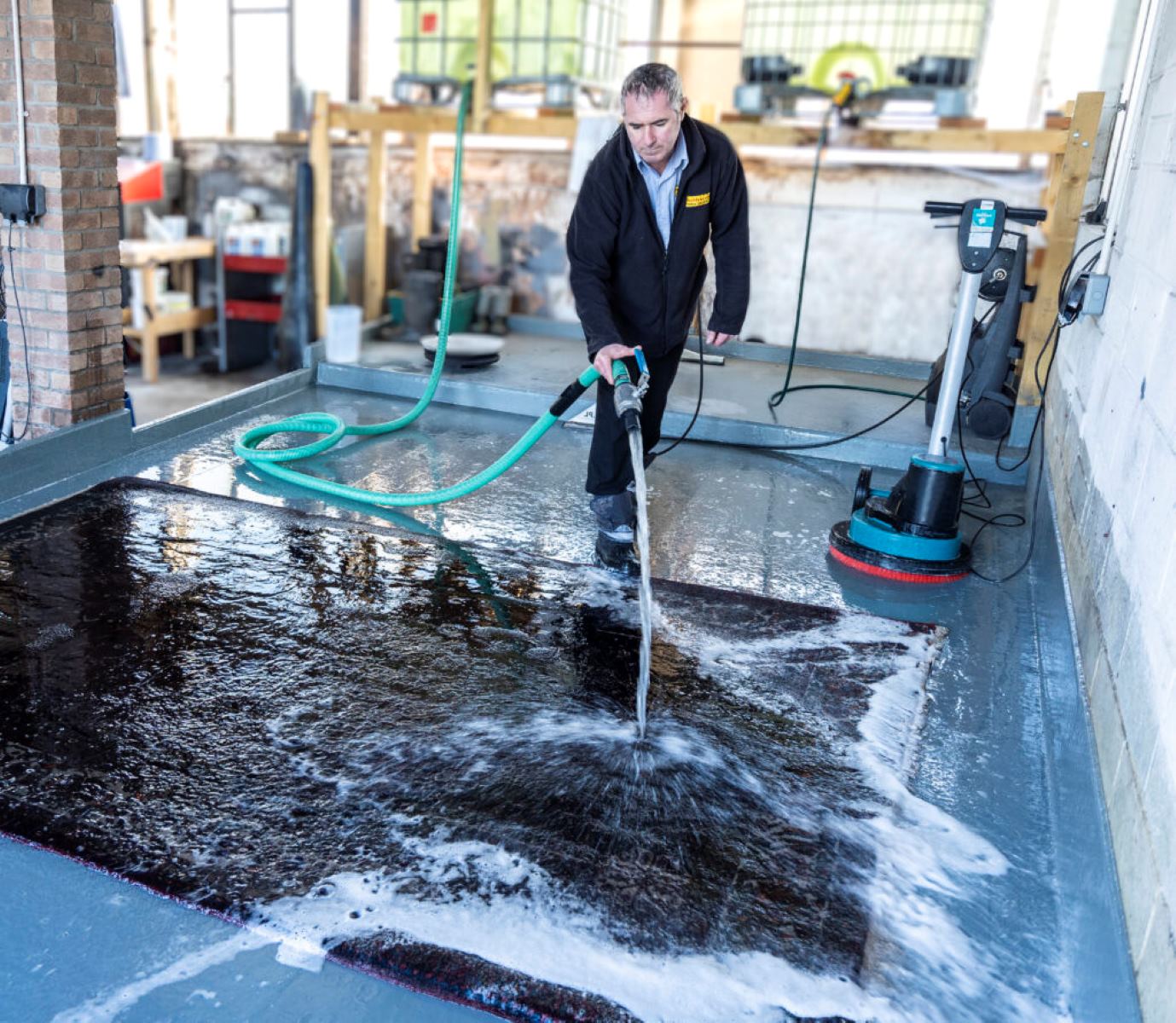
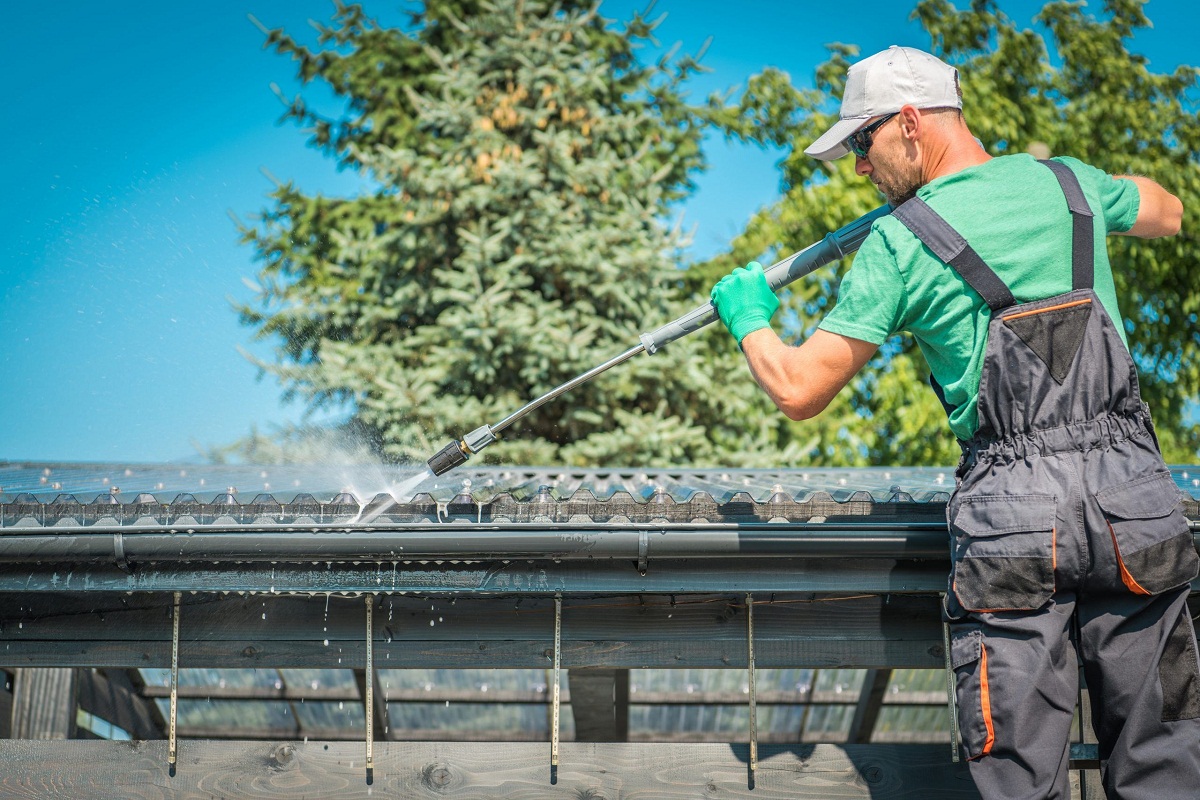
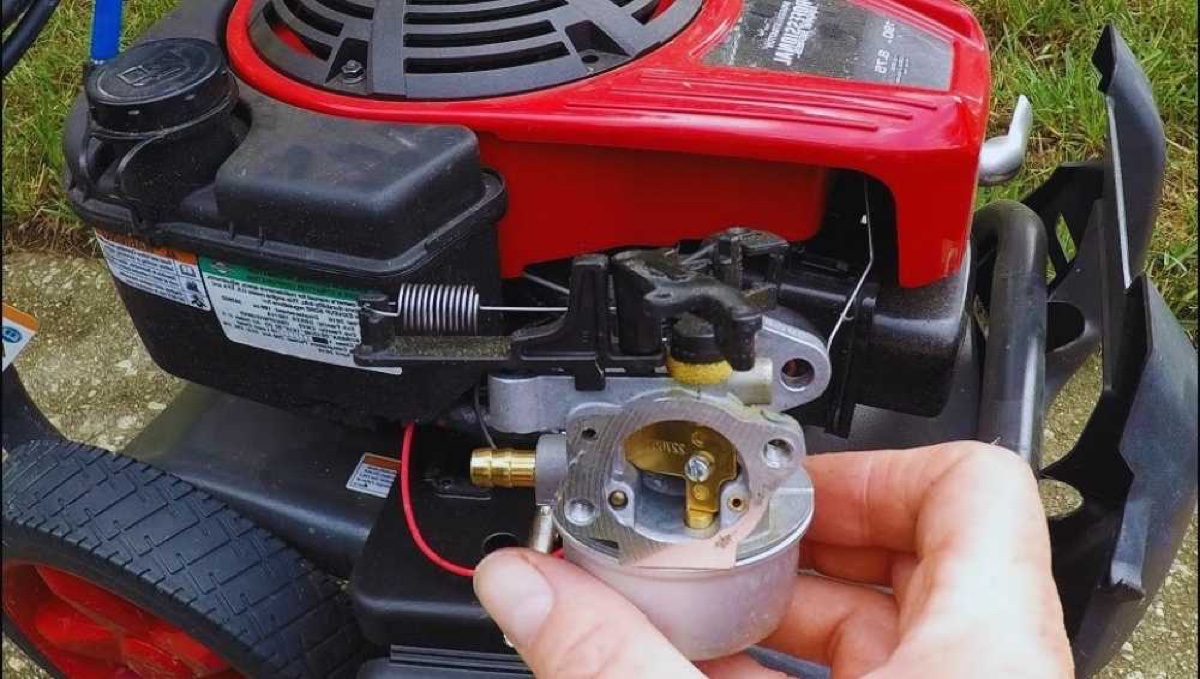
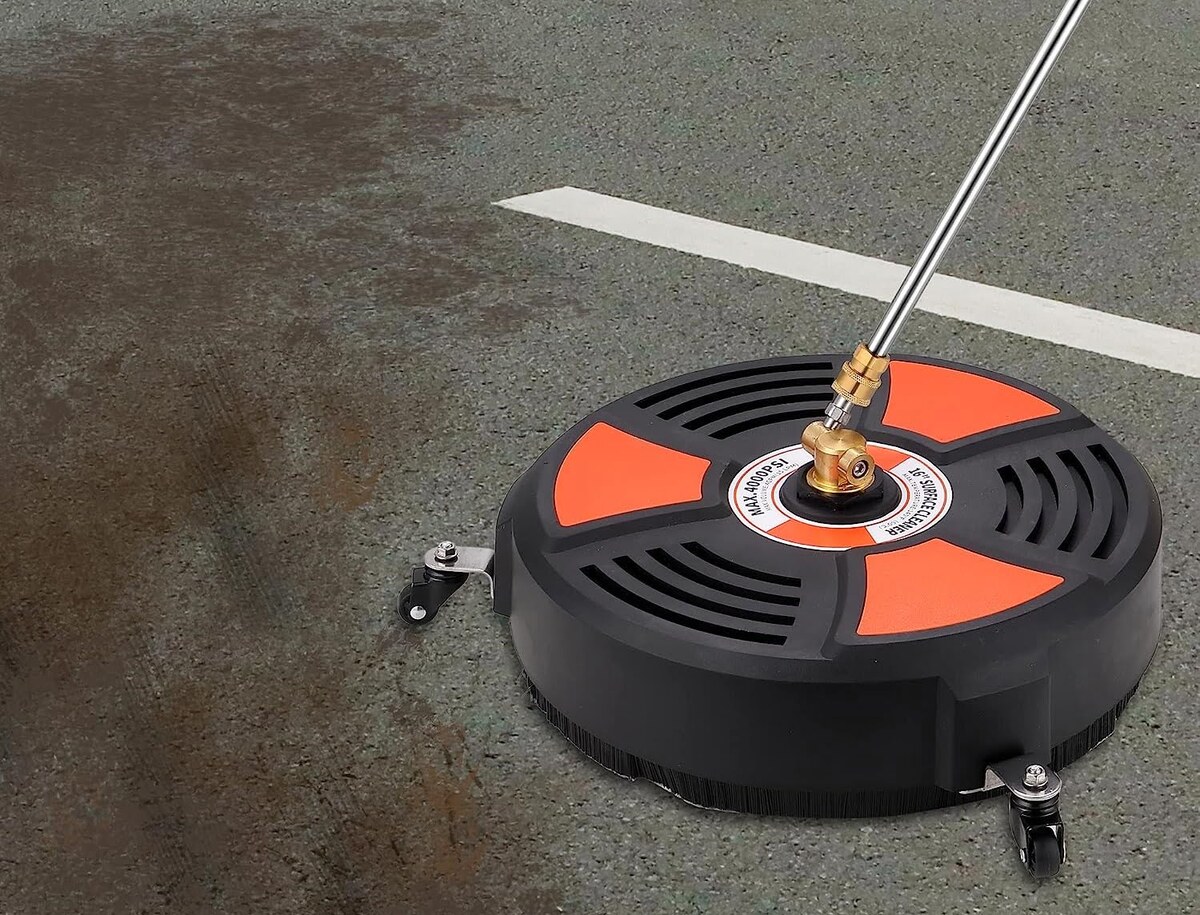
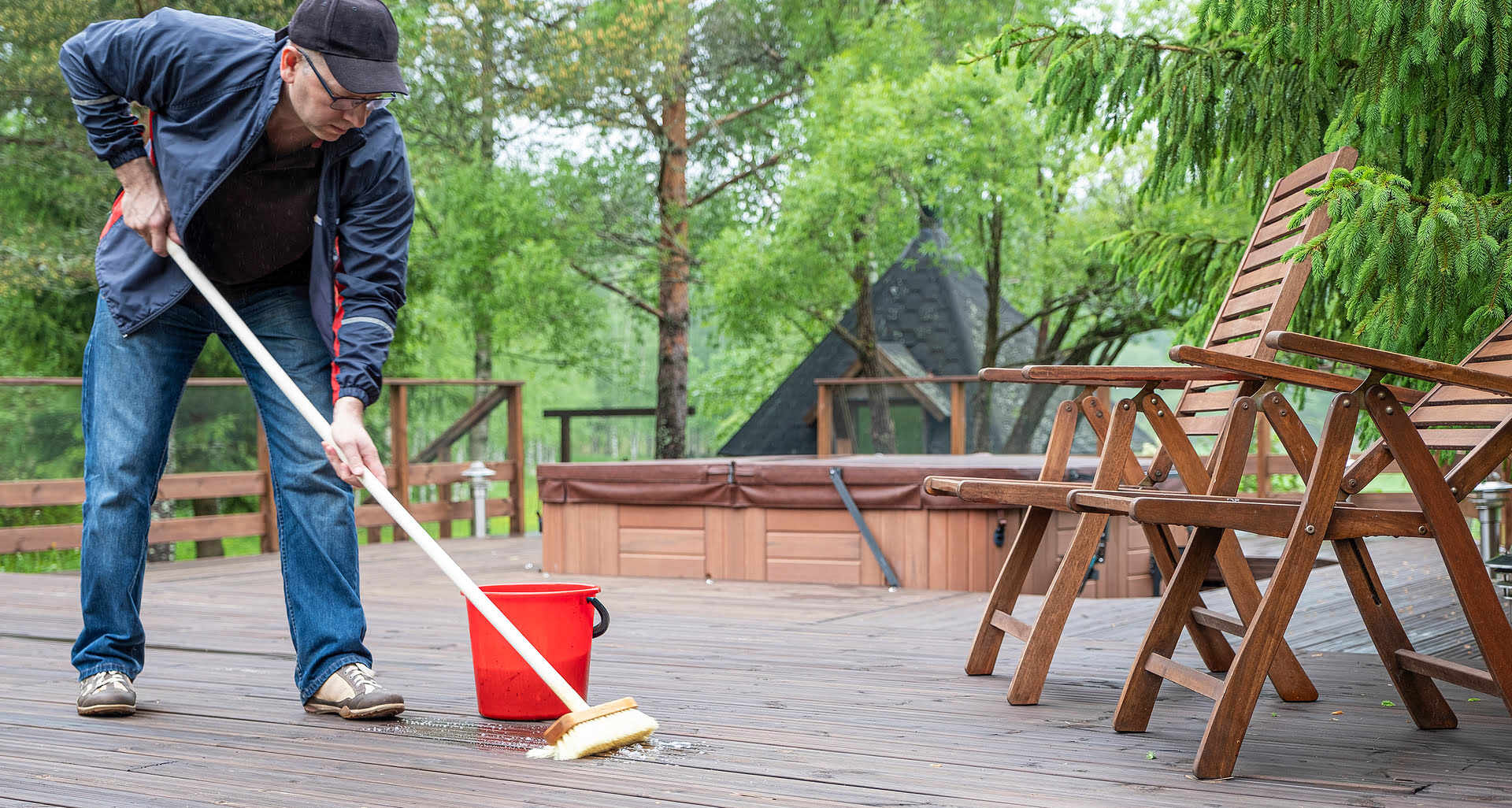
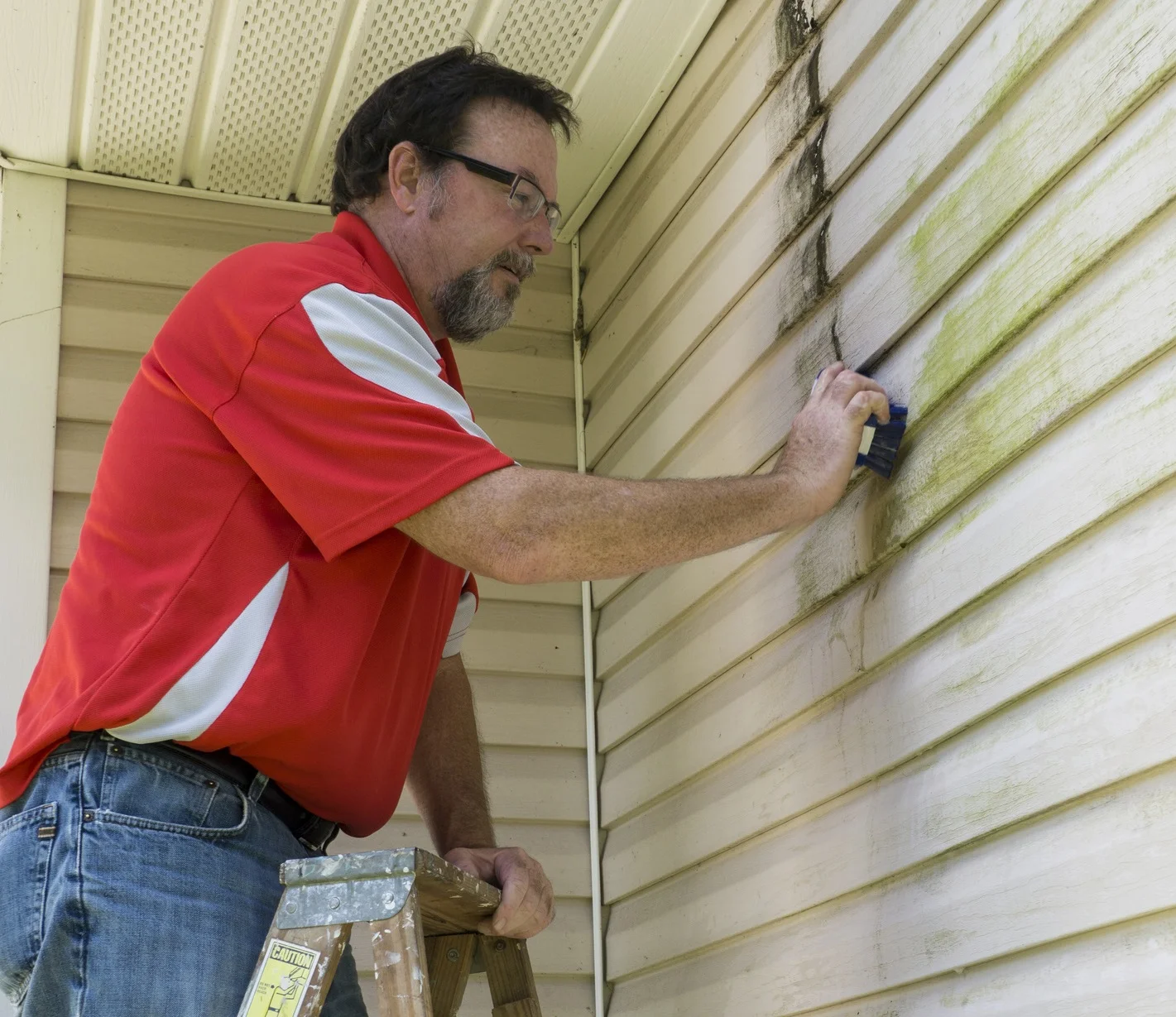
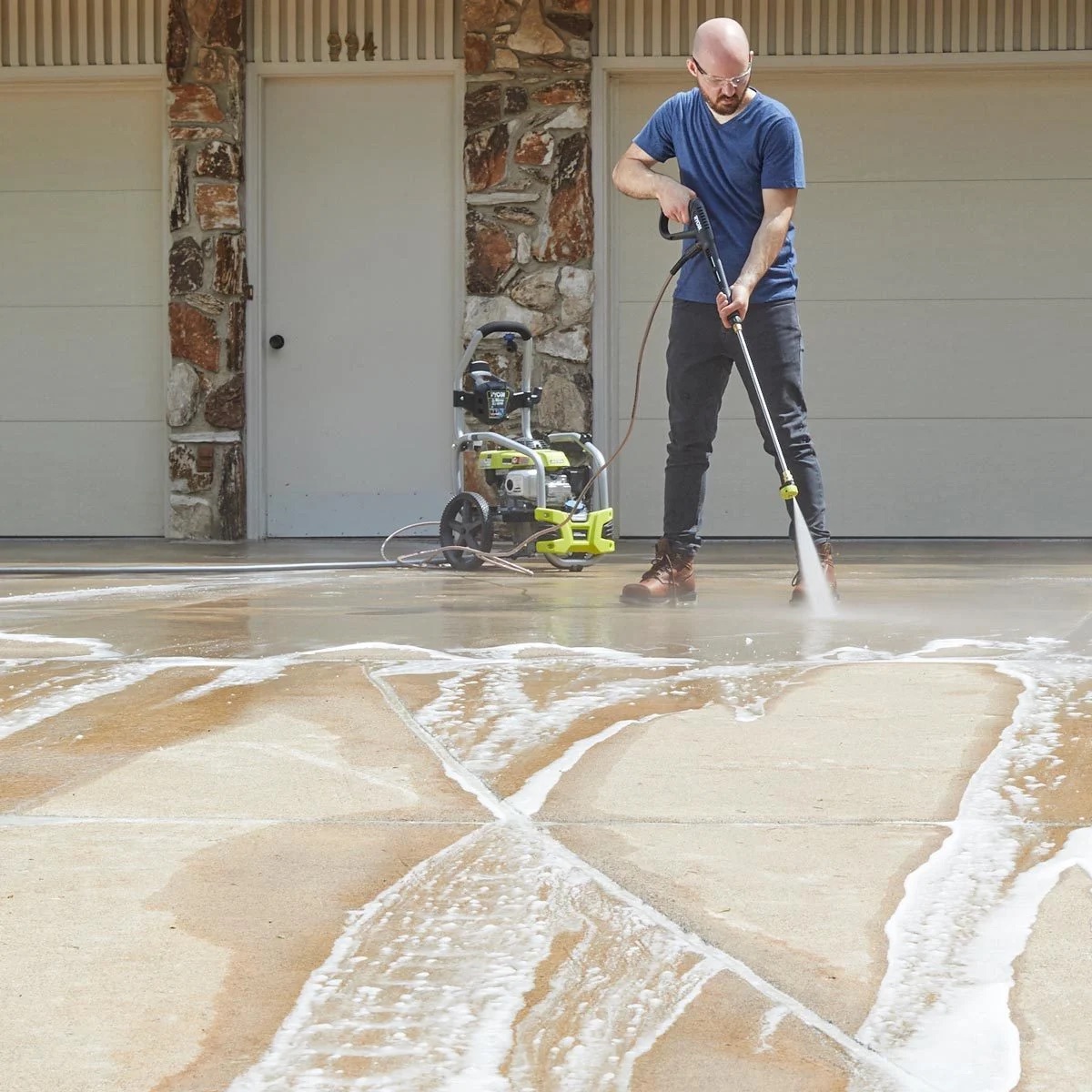

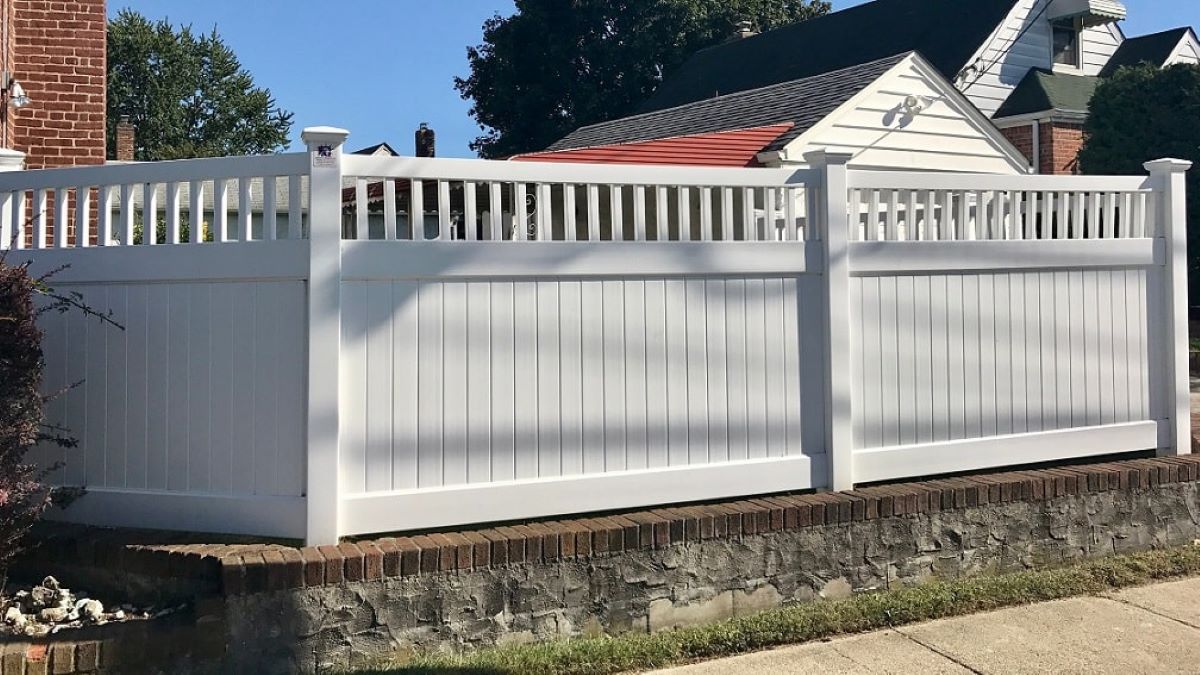

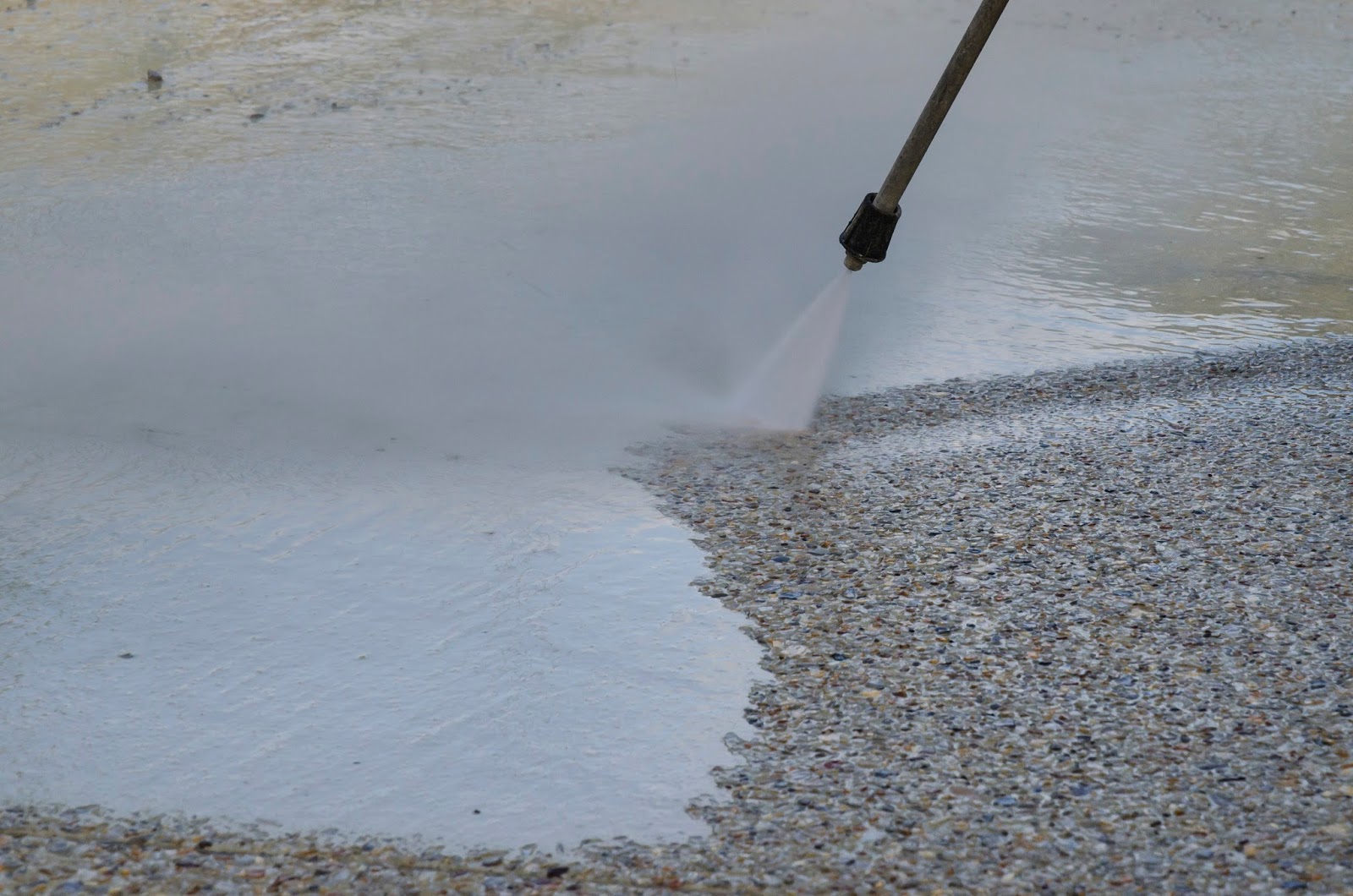
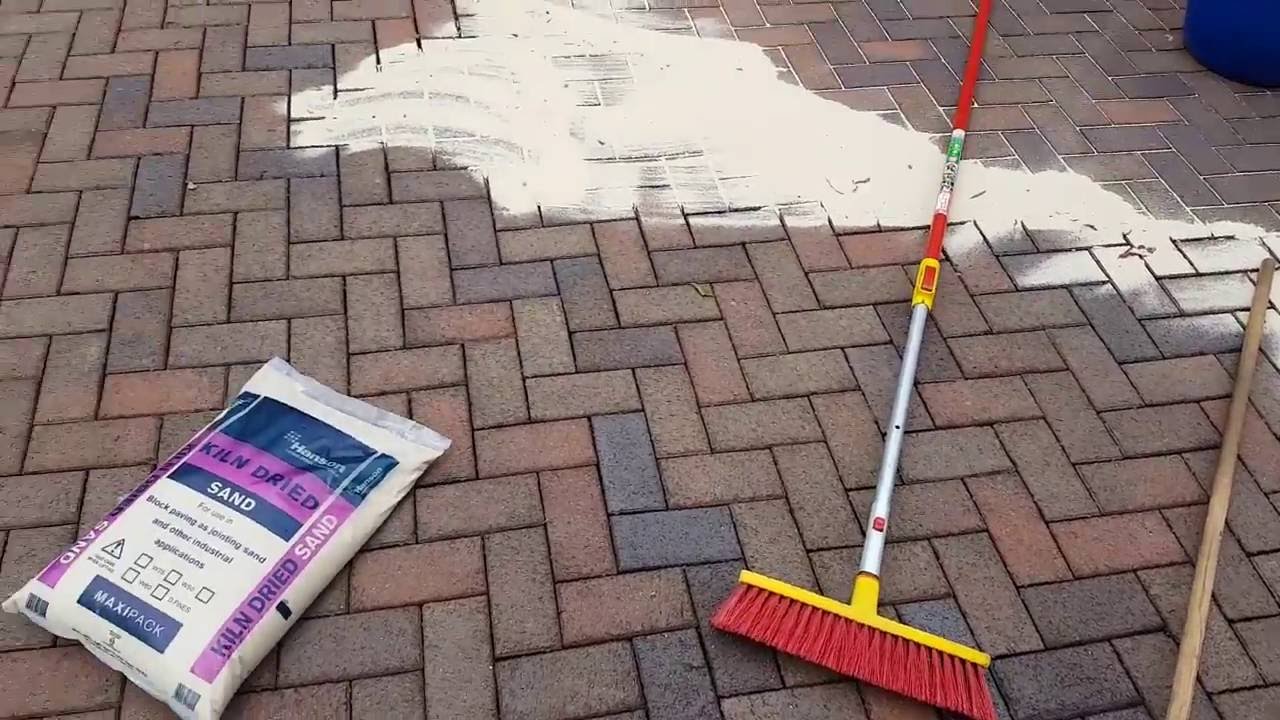

0 thoughts on “How To Clean Driveway With Pressure Washer”